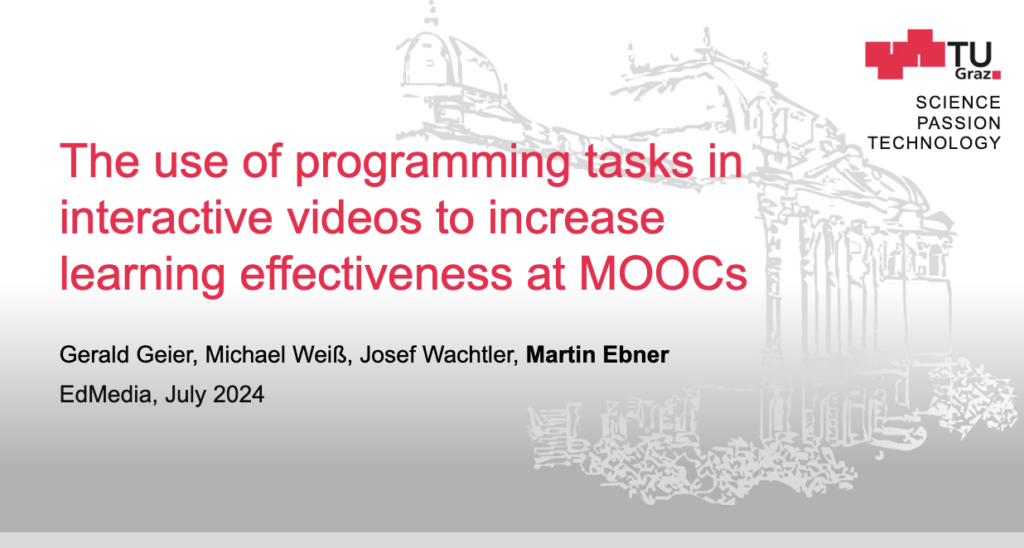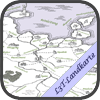Our first presentation at this year’s ED-Media conference is „The use of programming tasks in interactive videos to increase learning effectiveness at MOOCs„. Find here our slides:


Digitale Lehre an und rund um der Technischen Universität Graz
Our first presentation at this year’s ED-Media conference is „The use of programming tasks in interactive videos to increase learning effectiveness at MOOCs„. Find here our slides:

We did an article about „Scheduling Interactions in Learning Videos: A State Machine Based Algorithm“ for the first issue of the „International Journal of Learning Analytics and Artificial Intelligence for Education (iJAI)„.
Abstract:
Based on the currently developing trend of so called Massive Open Online Courses it is obvious that learning videos are more in use nowadays. This is some kind of comeback because due to the maxim “TV is easy, book is hard” [1][2] videos were used rarely for teaching. A further reason for this rare usage is that it is widely known that a key factor for human learning is a mechanism called selective attention [3][4]. This suggests that managing this attention is from high importance. Such a management could be achieved by providing different forms of interaction and communication in all directions. It has been shown that interaction and communication is crucial for the learning process [6]. Because of these remarks this research study introduces an algorithm which schedules interactions in learning videos and live broadcastings. The algorithm is implemented by a web application and it is based on the concept of a state machine. Finally, the evaluation of the algorithm points out that it is generally working after the improvement of some drawbacks regarding the distribution of interactions in the video.
[article @ journal’s homepage]
Reference: Wachtler, J., Ebner, M. (2019) Scheduling Interactions in Learning Videos: A State Machine Based Algorithm. IN: International Journal of Learning Analytics and Artificial Intelligence for Education (iJAI). 2019(1). pp. 58-76
 So nun ist es soweit – L3T hat eine interaktive Landkarte. Danke an Wey-Han Tan, der sich nochmals bereit erklärte und die bereits im Einführungskapitel vorhande Landkarte auch im Querformat erstellte. Wir haben diese nun mit den Kapitel-Hashtags versehen und mit den Abstracts verlinkt. Viel Spaß mit der Landkarte 🙂 .
So nun ist es soweit – L3T hat eine interaktive Landkarte. Danke an Wey-Han Tan, der sich nochmals bereit erklärte und die bereits im Einführungskapitel vorhande Landkarte auch im Querformat erstellte. Wir haben diese nun mit den Kapitel-Hashtags versehen und mit den Abstracts verlinkt. Viel Spaß mit der Landkarte 🙂 .